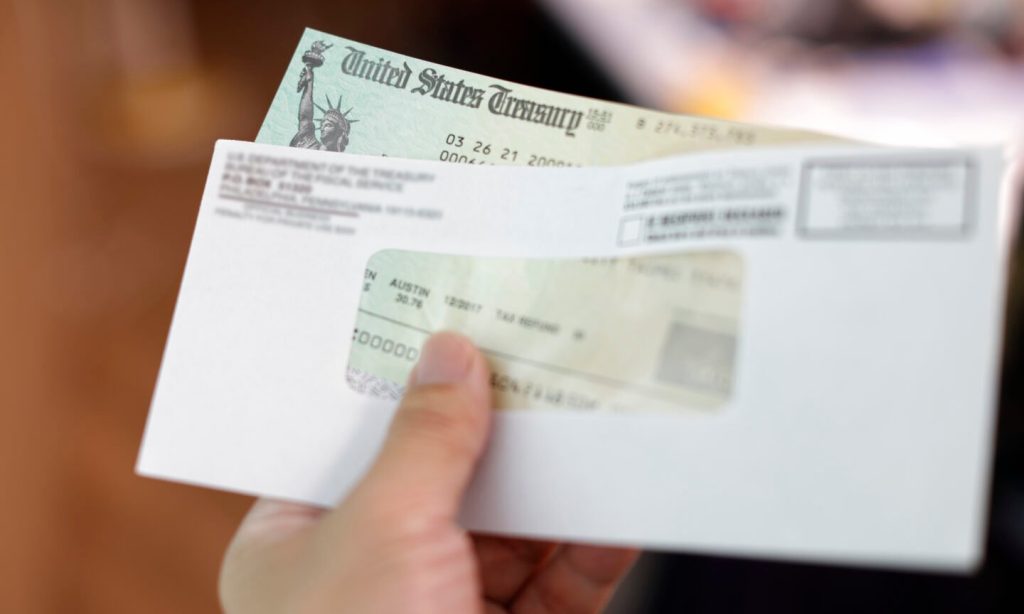Households are carrying record levels of debt. Balances climbed to $18.04 trillion in the fourth quarter of 2024, according to the Federal Reserve Bank of New York’s Center for Microeconomic Data.
Presidents Day weekend is a historically busy time for tax filing, and many Americans could turn to their refunds to pay off debt.
A refund has the potential to make a serious dent in your debt. The average refund amount in 2024 was $3,138, according to the IRS. But is paying down debt the best way to spend that money?
Confirm your refund amount before making plans
It’s best not to make any financial moves until you actually receive your refund. But if you want to start planning how to use it, there are ways to find out how much may be coming to you.
If you haven’t filed your tax return yet, you can use a tax calculator to estimate your federal refund. Gather paystubs, tax forms — such as W-2s or 1099s — and any other documents you may need to file.
If you’ve already filed, you’ll find the exact amount of your refund on your tax return. You’ll also need the amount to track your refund status with the IRS.
Cover necessities first
Before spending your refund on debt payments, make sure other key areas of your finances are in order. If you’re worried about covering essential expenses, such as groceries or utilities, make that your top priority. You might also want to assess whether you have enough money saved to handle an emergency without needing to take on more debt.
Pam Ladd, a certified public accountant in Knoxville, Tennessee and senior manager of personal financial planning with the American Institute of CPAs, suggests using your tax refund to bump up your emergency fund, or set one up, if you don’t have one.
Said Israilov, a certified financial planner in San Francisco, recommends socking away at least three to six months’ worth of living expenses.
“Having this set up will bring peace of mind as you navigate unexpected life challenges,” Israilov said in an email interview.
If saving that much feels out-of-reach, start with a smaller goal. A few hundred dollars can be a decent cushion.
Prioritize high-interest debt next
If your basic needs and emergency buffer are taken care of, move on to your debt. Focus on debt with high interest rates, such as credit cards and personal loans, which often carry rates in the mid-teens to 20% or more.
“Paying off higher-interest debt is important because that’s kind of the stuff that’ll grow on itself the fastest and become more of an unmanageable problem the fastest,” says Sarah Paulson, a CFP in Appleton, Wisconsin.
Consider listing your debts in order from highest to lowest interest rate. You can log into your online accounts or check monthly statements to find your rates. Then, you can apply your refund to the account with the highest rate while paying minimums on the rest, a strategy known as the debt avalanche.
Keep your values in mind
The guidance above is a helpful starting point for figuring out how to use your refund, but you should also think about what’s most important to you.
“This is why it’s called personal finance. It is personal. And what works for one person might not work for you,” Paulson says.
If you’re close to paying off a lower-rate debt, and wiping it out with your refund would bring you peace of mind, you might choose to do that. Or, you may find more value in putting the money toward your retirement savings, a wedding or a vacation.
Depending on your refund amount, you could even allocate money to multiple goals. This can help you take care of financial responsibilities without feeling deprived.
“I’m a huge proponent of ‘treat yourself,’” Paulson says. “It’s just making sure that you’re doing it in a way that’s actually satisfying, and not in a way that feels good in the moment but is going to leave you feeling kind of empty after the fact.”
Find the best debt consolidation loans
Debt consolidation loans can help you pay off high-interest debt. The best providers offer low rates, flexible terms and direct payment to your creditors.
Protect your tax refund
Some tax preparation services offer tax advance or tax refund loans if you file a return with them, which let you borrow against your refund and get your money immediately. While this may seem like a quick, convenient alternative to waiting for your refund, it might not pay off.
This type of loan is “not a great financial decision overall” because of the fees and interest that can be involved, Ladd says. You’d be paying to get money that’s already yours, and wind up with less in the end.
Getting a tax refund loan probably isn’t worth it unless it’s going to save you from a dire situation.
“If rent is due, rent is due, so I certainly understand,” Ladd says. “But that would be one of my last options.”
Besides, waiting for your refund might not take as long as you think. The IRS says most refunds are issued in under 21 days. You can get your refund faster by filing electronically and choosing direct deposit. The tax deadline for most filers is April 15.
Watch for refund scams, too. Staying vigilant can protect you from fraud and prevent you from going further into debt.

